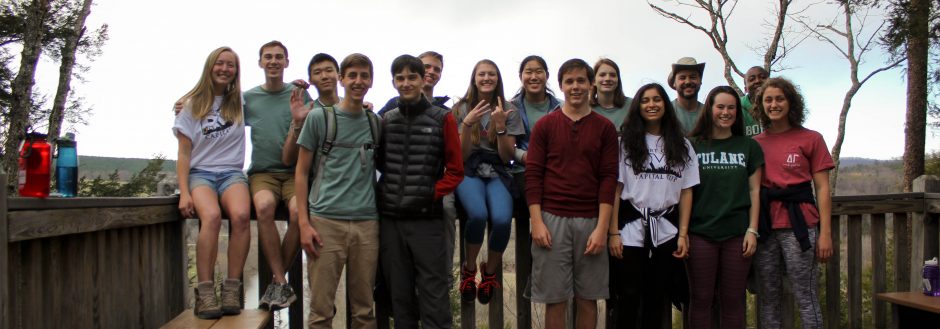This semester’s class discussions and my classmates’ posts strengthen my understanding of the word “resilience.” Our watershed’s strong recovery from the kepone and algae crisis in the late 1900s informs everyone in our community that we are resilient and can drive great changes. Thanks to all the extraordinary restoration work, the James’s water quality has improved from a grade of D to B. However, this result does not tell us to be complacent about the current status; instead, it should serve as an engine for collective actions to drive greater changes. The James River Report Card serves as scientific guidance for areas of strength we need to keep up with and issues requiring special attention and collaboration. What means can we, as environmentalists of sorts, utilize to realize change and achieve our vision of a fully healthy James River supporting thriving communities?
First, by leveraging the power of storytelling and history through the narrative of past wrongs and reconstructions, we can instill a sense of place and identity in our community members—an essential foundation for motivating environmental action. Martin’s Observation Log 5: Scars and Renewal emphasizes that battlefield parks serve the dual purpose of honoring painful history and encouraging ecological recovery. These landscapes show us how communities have learned to rebuild their relationships with nature after destruction. Similarly, the Kepone crisis in Hopewell serves as a stark reminder of environmental negligence and its consequences. Chapter 17, “Lessons of the Flow,” from In River Time recounts how the dumping of Kepone by the Allied Chemical Co. and subsequent algae blooms devastated public health and livelihoods. It also introduced us to Newton Ancarrow, a boatbuilder and wildflower enthusiast turned activist, who helped spark federal investment in sewage treatment by presenting the importance of establishing a sewer system and preserving diverse wildflower species to a garden club-school circuit after witnessing pollution firsthand. These stories of harm and healing can stir empathy and action. Organizing community events—like an annual “James River Day” or “Water Quality Festival”—and showcasing the river’s history and the efforts of environmental leaders can cultivate environmental stewardship and collective responsibility.
Second, we should strengthen community engagement through science, education, and hands-on restoration projects. For Observation Log 4, I used my water data collection experience at the James A. Buzzard Education Center and the James River Report Card to think about how scientific discoveries can help us identify and prioritize the most critical issues in the James River Watershed for fundraising and community projects. For Observation Log 5, I reflected on our enjoyable experience at the eco-corridor, where we learned about fish species, macroinvertebrates, and soil, and how this shared green space and learning center might draw more volunteers for restoration projects. For CBL 3, I talked about my experience volunteering at Bandy Field Nature Park, where I filled buckets with mulch and spread it over recently planted trees to improve the soil, stop erosion, and keep invasive species out. From these hands-on learning experiences, I formed a deeper connection with the watershed and marveled at our ability to drive significant impacts through passion and small actions. By integrating watershed science into school curricula and encouraging more youth participation in the green infrastructure projects, we can empower our current and future generations to become river stewards.
Lastly, meaningful change will require collaboration across sectors. In Observation Log 4, I identified three most critical issues we should prioritize for the James River based on the report card, including stormwater runoff, sediments, and the declining or dire situations of multiple fish species. The solutions on the report card inform us that the river’s health is not just an environmental issue; it intersects with economic development, agriculture, and public health. To address the problems of stormwater runoff and sediments, environmentalists must work with farmers to reduce nutrient runoff through regenerative practices, such as riparian planting, and with urban planners to implement green infrastructure like rain gardens and permeable pavements. The success of green and blue infrastructure projects in Osterbro, Copenhagen, illustrates an excellent example of the collaboration between the city planner and community members in building a climate-adapted neighborhood. Regarding coordination across diverse stakeholders, Mairin’s Observation Log 6 discusses the challenge of public-private partnership in securing federal and state funding and managing the James River Park System due to the park’s sheer size. However, by appealing to each other’s values and balancing each party’s needs, the partnership can turn out to be successful in fundraising and policy implementations.
In conclusion, the story of the James River is one of resilience, recovery, and responsibility. While we celebrate the progress that has brought its grade from a D to a B, we must remember that true environmental resilience requires continual vigilance and collective care. By grounding our efforts in powerful narratives, fostering community involvement, and pushing for systemic change, we can build a future where the James River thrives as both an ecological treasure and a unifying force for its communities.
